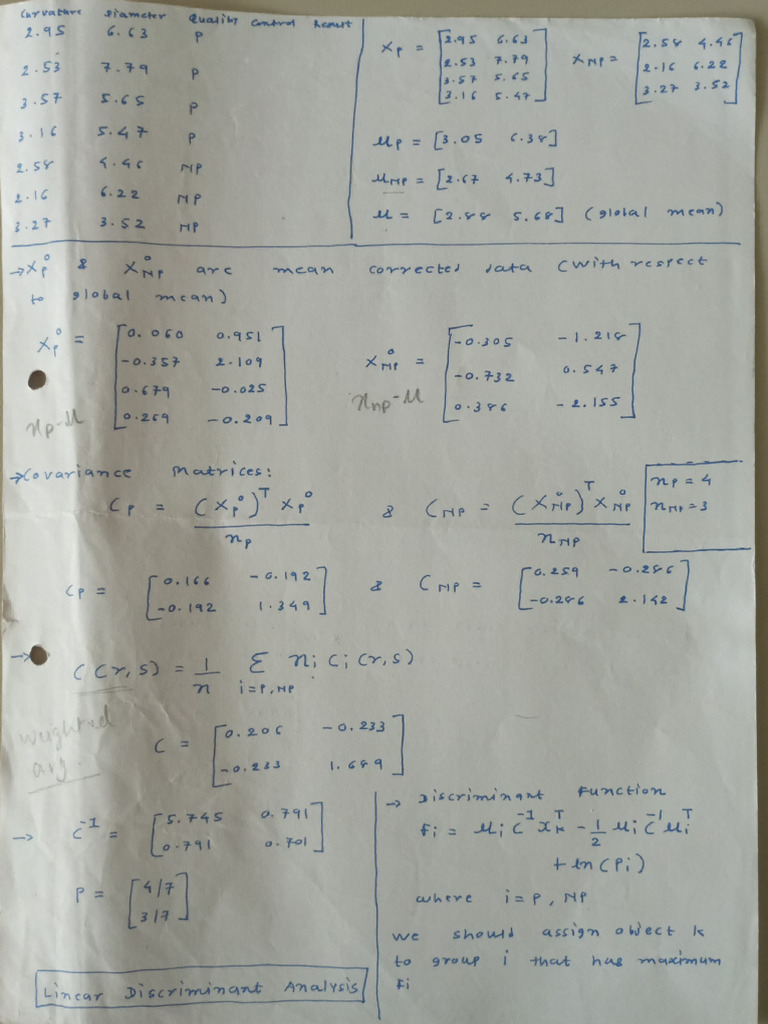5 Essential Numerical Recipes for Data Analysis

When it comes to data analysis, understanding the numerical techniques at your disposal can significantly enhance the depth and accuracy of your insights. Whether you're dealing with large datasets in research, finance, or any data-driven field, knowing the right numerical recipes can save time and ensure precision. Here, we'll delve into five essential numerical recipes that are fundamental for effective data analysis.
Numerical Integration

Numerical integration is crucial when you want to find the area under a curve or solve integrals that lack a closed-form solution. Here are two popular methods:
- Trapezoidal Rule: A simple yet effective method for approximating the definite integral of a function, where the integral is divided into trapezoids rather than rectangles.
- Simpson's Rule: An extension of the trapezoidal rule that uses quadratic polynomials to fit the points, offering better accuracy for smooth functions.
Let's look at how these methods work:
| Method | Formula | Accuracy |
|---|---|---|
| Trapezoidal Rule | ∫[a,b] f(x) dx ≈ (b-a) * [f(a) + f(b)] / 2 |
O(n-2) |
| Simpson's Rule | ∫[a,b] f(x) dx ≈ (b-a) / 6 * [f(a) + 4f((a+b)/2) + f(b)] |
O(n-4) |

🔧 Note: For higher accuracy, increase the number of intervals or use adaptive methods like Romberg integration or Gaussian quadrature.
Curve Fitting

Curve fitting is all about modeling data points with mathematical functions to understand trends and make predictions. Here are two commonly used techniques:
- Linear Regression: A method to model the linear relationship between a dependent variable and one or more independent variables.
- Polynomial Regression: Similar to linear regression but allows for non-linear relationships by introducing polynomial terms.
Steps in Curve Fitting:

- Choose the model type (linear, polynomial, etc.).
- Gather data and ensure it meets assumptions like linearity or homoscedasticity for best results.
- Fit the model to your data using methods like least squares.
- Validate the fit through metrics like R-squared, residuals plots, or cross-validation.
🔍 Note: Overfitting can occur if your model is too complex for the amount of data available. Use regularization techniques or simplify your model to avoid this.
Fourier Analysis

Fourier analysis is vital for decomposing periodic functions into their constituent frequencies, making it indispensable in signal processing and time series analysis.
- Fourier Series: Representing a function as a sum of sine and cosine terms.
- Fourier Transform: Transforming a function from its original domain (usually time or space) to the frequency domain.
Fourier series involves:
- Expressing a periodic function f(x) over interval [a, b] as:
f(x) = a0 + ∑[n=1 to ∞] [an cos(nxω) + bn sin(nxω)]
The Fourier Transform helps in:
- Identifying frequency components of signals.
- Processing and filtering signals in different frequency ranges.
📢 Note: Fourier analysis assumes the function is periodic or can be treated as periodic, which might not always be the case in real-world data.
Monte Carlo Simulations

Monte Carlo simulations use random sampling to solve mathematical or physical problems, particularly when dealing with uncertainty or complex systems.
- Generating a large number of random samples.
- Calculating statistical properties like mean, variance, or confidence intervals from these samples.
Applications include:

- Financial Risk Assessment: Simulating stock price movements to estimate risk.
- Optimization: Solving integral equations or optimization problems where deterministic methods fail.
🎲 Note: The accuracy of Monte Carlo simulations increases with the number of iterations, but it's a trade-off with computation time.
Gradient Descent

Gradient descent is an iterative optimization algorithm used in machine learning and data analysis for finding the minimum of a function.
- Basic Gradient Descent: Updates parameters by moving in the negative direction of the gradient of the cost function.
- Stochastic Gradient Descent (SGD): Uses random subsets of data for updates, making it suitable for large datasets.
- Variants like Adam, RMSprop: Introduce adaptive learning rates for better convergence.
The steps in gradient descent include:
- Initialize parameters randomly.
- Calculate the gradient of the loss function.
- Update parameters by subtracting the learning rate times the gradient.
- Repeat until convergence or a stopping criterion is met.
🗣️ Note: Learning rate selection and regularization are crucial to prevent overshooting or getting stuck in local minima.
In wrapping up, these five numerical recipes form the backbone of data analysis, offering tools to integrate data, model trends, decompose signals, simulate uncertainties, and optimize functions. Each method has its strengths and applications, providing analysts with a robust toolkit to tackle diverse data challenges. Whether you're integrating complex functions, fitting models, or optimizing algorithms, these techniques empower you to draw meaningful conclusions from your data, ensuring that your analysis remains both rigorous and insightful.
What is the difference between linear and polynomial regression?

+
Linear regression fits data to a straight line, assuming a linear relationship between variables. Polynomial regression, on the other hand, can fit data to any polynomial curve, allowing for non-linear relationships by incorporating higher-order polynomial terms.
Can Fourier analysis be applied to non-periodic functions?

+
Yes, through techniques like the Fourier Transform, non-periodic functions can be analyzed by assuming they are periodic with a very long period, or by windowing the data to make it effectively periodic for analysis.
How many iterations are needed for accurate Monte Carlo simulations?

+
The number of iterations depends on the problem’s complexity and desired accuracy. Generally, the more iterations, the better the accuracy, but this comes at the cost of increased computation time. A rule of thumb might be 10,000 to 100,000 iterations for many problems.
Related Terms:
- numerical recipes
- William Vetterling
- William T Vetterling
- Numerical Recipes free download
- Numerical Recipes PDF
- Numerical Recipes eigenvalues



